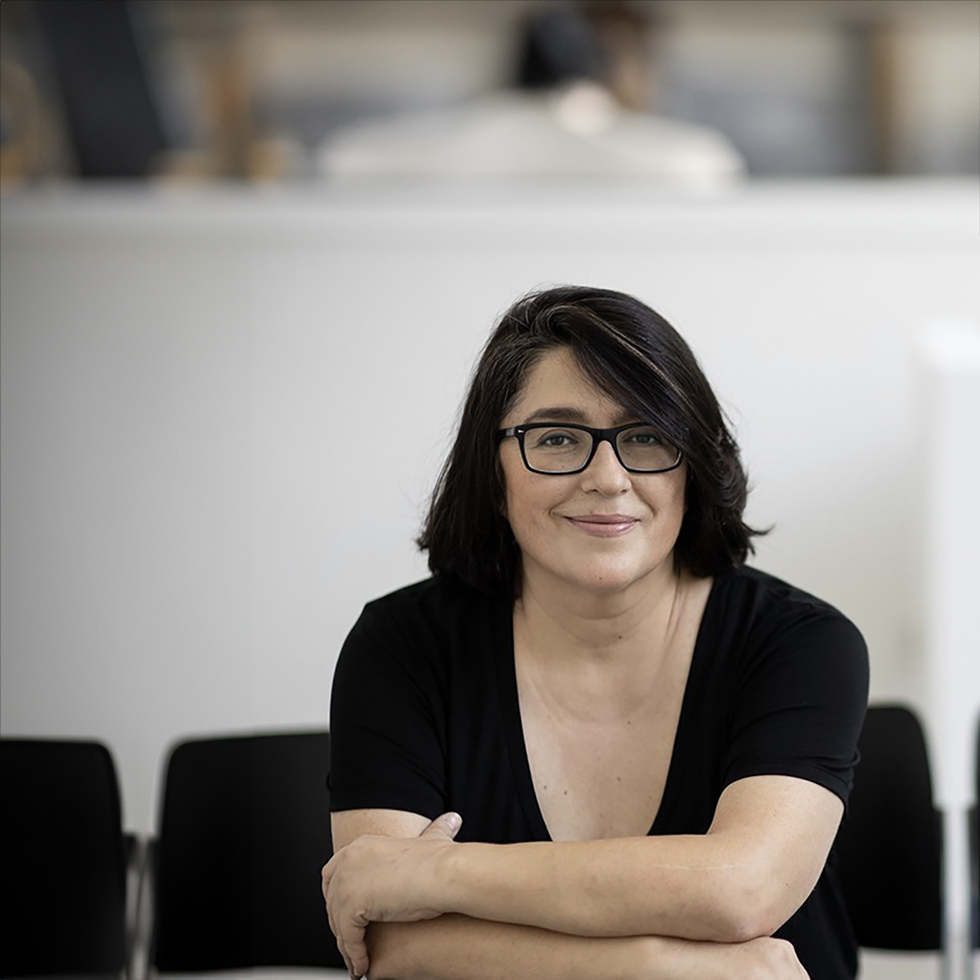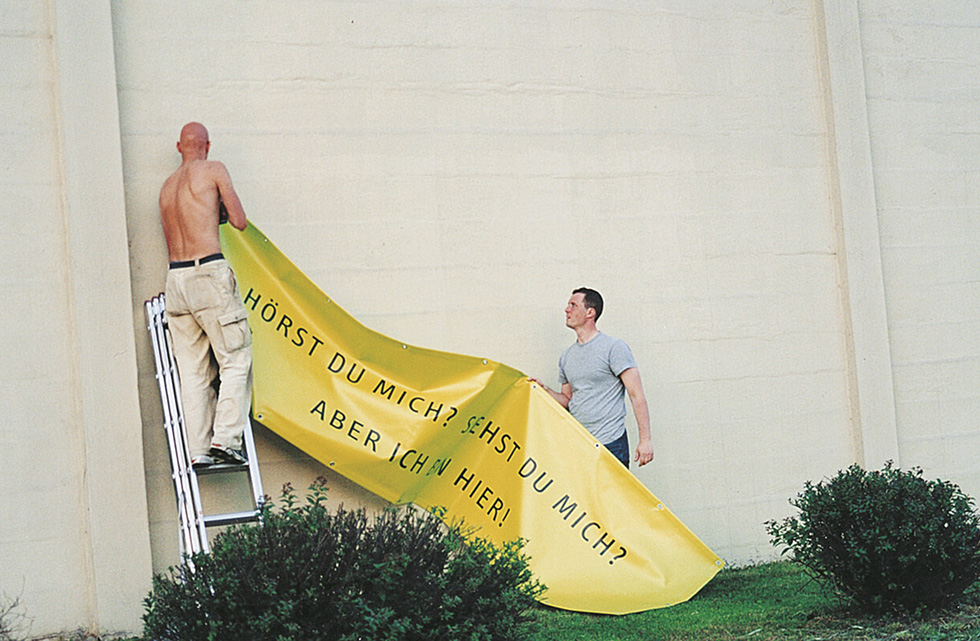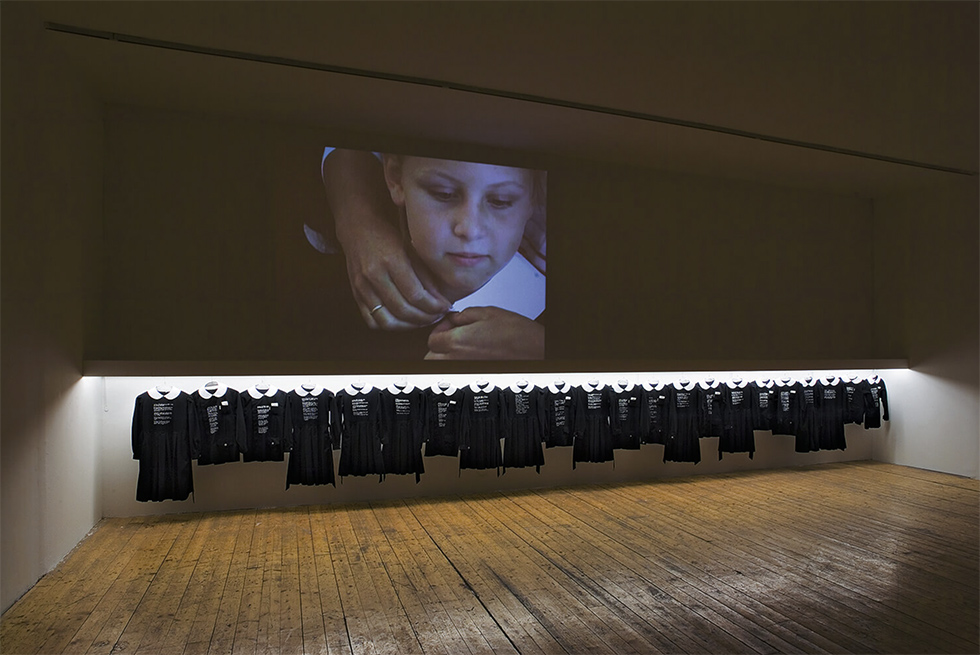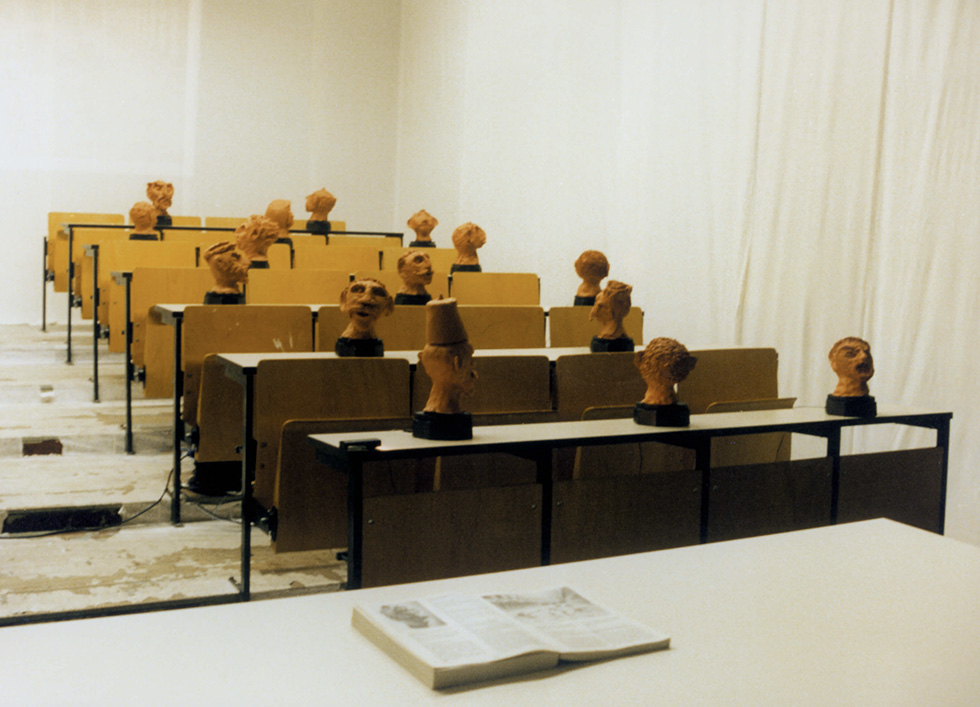01
those who seek the unknown do not have to leave the front door. in the rich and colorful illustrated book of one’s personal memories, not only friendly sparkling passages from the past are lined up one after the other and the more and densely the negative scenes pile up there, the worse the poor soul is becoming. the reasons for this peculiar behavior seem inexpressibly incomprehensible here and there it is all the more unclear why the following is said. especially when situations arise out of nothing, which are not immediately resolved and thus run the risk of smouldering for years as an inextricable conflict, a closer analysis of the causes leads to the same thing – the strangeness in the behavior of others. as a family feud, neighborhood quarrel or friendship dispute, long past or still present, the inexplicable of the other remains in the memory as something alien to one’s own decision and worthy of rejection.
02
the unfamiliar enters the child’s life at an early stage of development. long before it can be directly felt and experienced in body and soul, the foreign steams out of the mouths of the educating elders in the form of stories, fairy tales or religious writings. in the binary logic of good or evil, the role of the foreign is clear – the stranger the scarier. almost half a century later, naughty children are no longer threatened with being sold to traveling, alien peoples, but the seed of morality is sown. carying witches, ghosts and devils in tow as docile aids to moral training, the generation born in the middle of the last century still has the scar of fear right behind their foreheads.
03
in the social fiction short stories and novels by author ursula k. le guin, with cross-genre themes such as religion, anarchy and gender, the alien, the other, is simply projected onto a distant planet. with microscopic precision of observation and the distancing fiction of a ‚what if‘, le guin succeeds in playing out her narrative, like a simulation game, both from the inside and the outside. her novel ‚the left hand of darkness‘, published in 1969, deals with androgyny and is one of the first books in the field of feminist science fiction. it was precisely the subtle trick of setting the narrative in a distant universe that enabled her at the time to shed light on the non-conformist aspect of an alternative sexuality. twenty-one years later, the philosopher judith butler published her magnum opus ‚gender trouble‘, which discusses the body as a construct of normative ideals and the connection between the concepts of identity, subject and power.
04
2021, netflix is airing the six-part mini-series ‚amend‘, which focuses on the 14th amendment to the united states constitution and tells the story of its creation and the activist struggle to enforce it. the sixth episode deals with the problem of migration in relation to this article. incidentally, the series succeeds in adding a parallel reading to the supposedly entrenched image of the other, the foreigner. with a distinct naming of those addressed and the resulting rights of the same, a clear opposite emerges from a previously vague mass. ‚i have a name‘ is a clear statement of the right and the will to participate in society. ‚you have a name‘, testifies to the participation in seeing this.
05
esra ersen’s most important and greatest strength lies in documentation, the artistic realization of perception and testimony. participation and involvement are the pillars of a functioning, integrative society and democracy in action. ersen proceeds extremely cautiously and without any artistic exaggeration. her multimedia approach, which lies between sober pointing out and intervention in standardized situations, opens the door step by step to questioning learned clichés. by having the thoughts of prisoners displayed on large banners on the outside walls of their prisons, or by having austrian children wear turkish school uniforms for a week, the artist subtly taps the walls for hollow-sounding places and sensitively feels out the moment when a situation can tip over into its opposite. the resulting new experience corresponds to a recoding.
06
using the example of dealing with prisoners, esren makes it clear that not only immigrants are representatives of a foreigner, but that parts of a homogeneous society can also become one. by highlighting the situation of migrant africans in istanbul and encouraging students to modulate the prejudiced image of ‚the turk‘ in clay, she shows how the inner image of the other can be transformed into a new view of reality. while normative and critical migration discourse attempt to negotiate a valid middle ground, the artist’s work, spanning three decades, stands as an award-winning compendium and an offer for dialog.
martin eugen raabenstein, 2023
more at esraersen.de
esra ersen


esra ersen
testimony
production still: real utopia, art in public space
karlau prison, graz, 2003

esra ersen
i am turkish, i am honest, i am diligent
installation view
o.k. center for contemporary art linz, 2005

esra ersen
karussell
installation view
biology lecture hall, hansa-gymnasium, köln, 1998

esra ersen
le due rome
exhibition view
in the framework of the art in public space
project villa massimo si avvicina, rome, 2020
photo: alberto novelli
esra ersen
01
those who seek the unknown do not have to leave the front door. in the rich and colorful illustrated book of one’s personal memories, not only friendly sparkling passages from the past are lined up one after the other and the more and densely the negative scenes pile up there, the worse the poor soul is becoming. the reasons for this peculiar behavior seem inexpressibly incomprehensible here and there it is all the more unclear why the following is said. especially when situations arise out of nothing, which are not immediately resolved and thus run the risk of smouldering for years as an inextricable conflict, a closer analysis of the causes leads to the same thing – the strangeness in the behavior of others. as a family feud, neighborhood quarrel or friendship dispute, long past or still present, the inexplicable of the other remains in the memory as something alien to one’s own decision and worthy of rejection.
02
the unfamiliar enters the child’s life at an early stage of development. long before it can be directly felt and experienced in body and soul, the foreign steams out of the mouths of the educating elders in the form of stories, fairy tales or religious writings. in the binary logic of good or evil, the role of the foreign is clear – the stranger the scarier. almost half a century later, naughty children are no longer threatened with being sold to traveling, alien peoples, but the seed of morality is sown. carying witches, ghosts and devils in tow as docile aids to moral training, the generation born in the middle of the last century still has the scar of fear right behind their foreheads.
03
in the social fiction short stories and novels by author ursula k. le guin, with cross-genre themes such as religion, anarchy and gender, the alien, the other, is simply projected onto a distant planet. with microscopic precision of observation and the distancing fiction of a ‚what if‘, le guin succeeds in playing out her narrative, like a simulation game, both from the inside and the outside. her novel ‚the left hand of darkness‘, published in 1969, deals with androgyny and is one of the first books in the field of feminist science fiction. it was precisely the subtle trick of setting the narrative in a distant universe that enabled her at the time to shed light on the non-conformist aspect of an alternative sexuality. twenty-one years later, the philosopher judith butler published her magnum opus ‚gender trouble‘, which discusses the body as a construct of normative ideals and the connection between the concepts of identity, subject and power.
04
2021, netflix is airing the six-part mini-series ‚amend‘, which focuses on the 14th amendment to the united states constitution and tells the story of its creation and the activist struggle to enforce it. the sixth episode deals with the problem of migration in relation to this article. incidentally, the series succeeds in adding a parallel reading to the supposedly entrenched image of the other, the foreigner. with a distinct naming of those addressed and the resulting rights of the same, a clear opposite emerges from a previously vague mass. ‚i have a name‘ is a clear statement of the right and the will to participate in society. ‚you have a name‘, testifies to the participation in seeing this.
05
esra ersen’s most important and greatest strength lies in documentation, the artistic realization of perception and testimony. participation and involvement are the pillars of a functioning, integrative society and democracy in action. ersen proceeds extremely cautiously and without any artistic exaggeration. her multimedia approach, which lies between sober pointing out and intervention in standardized situations, opens the door step by step to questioning learned clichés. by having the thoughts of prisoners displayed on large banners on the outside walls of their prisons, or by having austrian children wear turkish school uniforms for a week, the artist subtly taps the walls for hollow-sounding places and sensitively feels out the moment when a situation can tip over into its opposite. the resulting new experience corresponds to a recoding.
06
using the example of dealing with prisoners, esren makes it clear that not only immigrants are representatives of a foreigner, but that parts of a homogeneous society can also become one. by highlighting the situation of migrant africans in istanbul and encouraging students to modulate the prejudiced image of ‚the turk‘ in clay, she shows how the inner image of the other can be transformed into a new view of reality. while normative and critical migration discourse attempt to negotiate a valid middle ground, the artist’s work, spanning three decades, stands as an award-winning compendium and an offer for dialog.
martin eugen raabenstein, 2023
more at esraersen.de

esra ersen

esra ersen
testimony
production still: real utopia, art in public space
karlau prison, graz, 2003

esra ersen
i am turkish, i am honest, i am diligent
installation view
o.k. center for contemporary art linz, 2005

esra ersen
karussell
installation view
biology lecture hall, hansa-gymnasium, köln, 1998

esra ersen
le due rome
exhibition view
in the framework of the art in public space
project villa massimo si avvicina, rome, 2020
photo: alberto novelli
